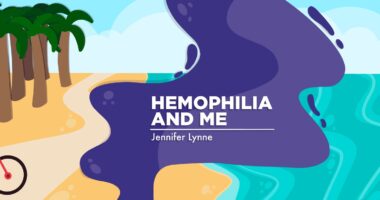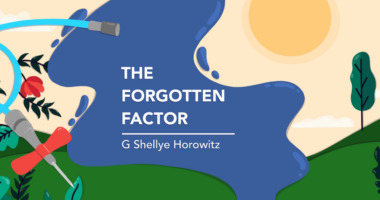It’s time for women with bleeding disorders to be seen
For too long, women with bleeding disorders have been denied care

Women like me often wonder how the hemophilia community has overlooked us for so long. The stories of women labeled as mere “carriers” — despite experiencing life-threatening bleeding episodes — are endless. For decades, we’ve lived with symptoms that disrupt our lives, yet we were dismissed, misdiagnosed, or told we couldn’t possibly have hemophilia.
I recently had a light bulb moment while listening to “Unmuted,” a Hope for Hemophilia podcast. In it, Tamuella Singleton, MD, discusses the topic of bleeding disorders and healthcare equity. She breaks down how generations of women in bleeding disorder families were left out of the conversation. For years, the focus was on men with severe hemophilia, because their bleeding was more visible, more “urgent.” Simply stated, the healthcare system wasn’t built to recognize bleeding disorders in women.
Singleton uses an analogy about fires, which immediately made me think of the California wildfires. Watching footage of fire trucks speeding past burning homes was heartbreaking. But eventually, I understood why it was happening. The firefighters were racing toward the biggest, most uncontrollable blazes, leaving smaller fires behind to burn.
That analogy perfectly reflects the history of the bleeding disorders community. We’ve been dealing with decades of raging infernos.
In the 1960s, the life expectancy of a person with severe hemophilia was less than 20 years old. Many people with hemophilia died young due to complications such as intracranial bleeding and other hemorrhages. Even minor injuries could become fatal due to a person’s inability to form stable blood clots. They bled constantly. Their joints were destroyed. They were on fire.
The introduction of factor replacement therapy in the ’70s significantly changed the outlook for people with hemophilia, extending their life expectancy and improving their quality of life. But then, things got even worse. The clotting factor treatment — intended to be a lifesaving breakthrough — became a source of devastation. Contaminated blood products exposed thousands of people with hemophilia to HIV/AIDS and hepatitis. More massive fires.
Then there are folks living with inhibitors, which is when the body rejects clotting factor medication, making hemophilia even harder to manage. Another massive fire.
For decades, the entire hemophilia community was fighting these emergency fires. Families were focused on keeping their sons alive. Researchers were scrambling to find better treatments. Advocates were pushing for funding and awareness. And in all of this, women with bleeding disorders were left behind.
And then there were women like me. I was diagnosed in the ’70s, but my bleeding concerns were never treated with the same urgency as they were for men. Why? Because I wasn’t “on fire.” I had frequent joint bleeds in my knees. Heavy periods drained me. Surgeries left me to bleed too much. Compared with a young boy who had severe hemophilia and was constantly in and out of the hospital, I didn’t seem like an emergency.
The misconception that women are just “carriers” has persisted for decades. We aren’t given the same access to care. Some of us aren’t diagnosed until adulthood — after years of unexplained bleeding, anemia, and medical trauma. Many are still fighting for recognition today.
But things are changing. The biggest fires are being controlled. New treatments are transforming how bleeding disorders are managed. Even those with inhibitors have more options than ever before.
Now, there is finally time for the smaller fires. The women who have been bleeding in the background for decades are finally being seen. It’s our turn.
Note: Hemophilia News Today is strictly a news and information website about the disease. It does not provide medical advice, diagnosis, or treatment. This content is not intended to be a substitute for professional medical advice, diagnosis, or treatment. Always seek the advice of your physician or another qualified health provider with any questions you may have regarding a medical condition. Never disregard professional medical advice or delay in seeking it because of something you have read on this website. The opinions expressed in this column are not those of Hemophilia News Today or its parent company, Bionews, and are intended to spark discussion about issues pertaining to hemophilia.







Leave a comment
Fill in the required fields to post. Your email address will not be published.